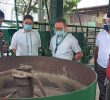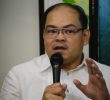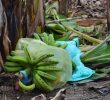By GERMELINA LACORTE
Davao Today
DAVAO CITY—Groups catering to the financing needs of the poorest of the poor admitted having a hard time bringing their services to the Autonomous Region in Muslim Mindanao (ARMM) because of the high risk and the high cost it entails.
Jeffrey Ordonez, executive director of the Mindanao Microfinance Council, said problems on peace and order make the ARMM a very high risk for microfinance lending.
In fact, non government organizations involved in micro-financing had to allocate bigger resources when they choose to enter the ARMM because of the high risk involved, he said.
“Since we started, we have always strived to provide micro financing in Mindanao, especially in areas less covered,” Ordonez said. “But we’ve been having problems in penetrating the ARMM, especially in such towns as Lanao and Maguindanao. We’re not that ready.”
He said that past experiences added to the apprehension of some micro-financing NGOs eyeing to enter Maguindanao and Lanao del Sur.
“In the past, we have experiences of MFIs na di maganda (not good),” Ordonez said. “We also had a case of one MFI which collapsed in Marawi and one MFI official was kidnapped in Basilan.”
Ruben de Lara, president of the Microfinance Council of the Philippines Inc., defined microfinancing as loans extended to the poor, which could range as low as P3,000 or 4,000 to as high as P8,000. “These are amounts that formal financial institutions will not entertain but which the poor needed most,” De Lara said.
Ordonez said his group has covered most upland barangays, including indigenous peoples’ communities in Mindanao not covered by regular financing institutions. ARMM has one of the country’s poorest provinces, the sector that the group targets to cater.
“We have already established our presence in some areas in the ARMM like Basilan and TawiTawi, but not in Lanao del Sur and Maguindanao,” said Ordonez. “It’s very high risk, especially in areas with conflict,” he said. “We still have some questions on the capability of our microfinancing institutions to cover the cost. They’re not that ready,” he said. “They have to allocate some amount for possible losses for loans.”
He said one strategy would be to tap existing small businesses in the area and develop their capability to provide microfinance. He said one had to have a very specific knowledge of the area to minimize the risk.
“Perhaps, we will encourage bigger organizations to enter these areas because they have more money and resources to bring,” Ordonez said.
But he added his group will partner with the Japanese International Cooperation Agency (JICA) in providing micro-financing for the micro-enterprise development program of the Department of Trade and Industry in the ARMM.
Of the 46 microfinancing institutions nationwide, 39 are MFI NGOs providing credit to the poorest of the poor. The rest are thrift and rural banks and cooperatives, said Lalaine Joyas, executive director of the Microfinance Council of the Philippines. Of the 39 MFIs, 11 are based in Mindanao. MFIs provide services that include advocacy and training to outright loan and credit lending.
“The poor will always remain poor as long as their needs are not met,” said De Lara as he challenged microfinance institutions to go even beyond micro-lending and make room for other social development programs such as housing, sanitation, and anything that will help the poor fight poverty. “They need all the support they could get.” (Germelina Lacorte/davaotoday.com)










